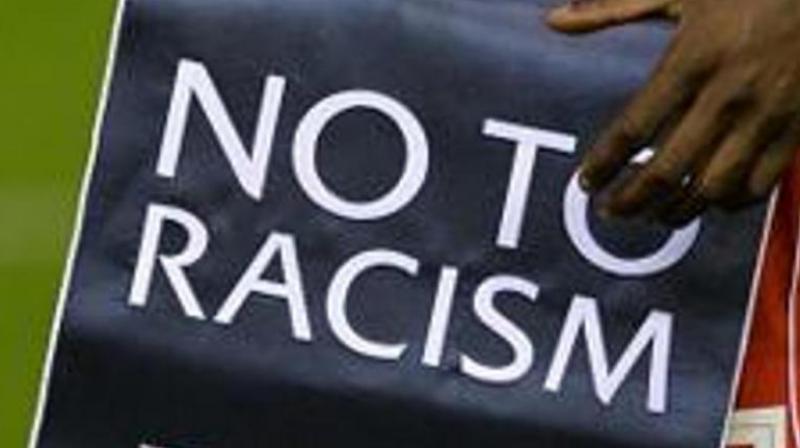Time to embrace that brown, dark can be beautiful

Like many other outrageous acts of our day, this one came to the fore via the social media. A few days ago, Pakistani model Zara Abid posted photos of herself that had been taken for Nabila’s salon. The pictures, posted on the model’s Instagram account, show her with a skin tone many shades darker than her own (at least based on the other posts on her account). One can see that the model is affecting an African air, complete with her “enhanced” skin tone.
The “blackface” use of cosmetics to make the skin darker and effect cultural misappropriation of African tradition can be viewed as a racist act. In Pakistan, as in the rest of South Asia, made up mostly of brown people, it has been tolerated. But perhaps not so this time as several of the model’s tens of thousands of Instagram followers, along with many others, called her and the salon out for their depiction. It can be seen as insulting to those of African origin, with the dark skin colour as something that can be pantomimed, and made a set piece, so to speak. And it was a slight to South Asia’s many dark-skinned women, including models, whose actual skin colour could have been presented instead. The message that one gets is that dark skin is so terrible in its original existing form that even depictions of it have to involve some sort of fakery.
Such is the lot of post-colonial nations. South Asians, imagining themselves brown, idolise fair skin and think of themselves as more beautiful than Africans. A few shades lighter is imagined as a few shades closer to the old colonial masters, and several shades better than those who are darker. The racism of the colonists — who thought of all races darker than themselves as inferior (they continue to do so in their neo-colonial reincarnations) — is thus absorbed.
In 2019, it is still being reproduced in photo shoots in which models, photographers and employers all thumb their noses at this sordid history of exclusion and degradation based on skin colour. The acceptable blackness that every dark girl looking at such photos is being told is the sort that can be washed away.
It is a terrible pity — just as Indians, Pakistanis and other South Asians have trouble accepting that they are not of some pure Aryan (and hence white) heritage. Most have attached some lineage to connect them to the conquering Arabs — any link to something better than simply being South Asian, brown or dark brown or black. The consequences have been disastrous, and have inculcated in millions of women in the region the belief that somehow they must transform their South Asian brown-and-bronze reality into the fantasy of whiteness that is so iconised in the culture. To be beautiful, a girl — as she is told by culture and convention, by her mother and sister — must make herself white.
Becoming white in South Asia requires much effort and risk. For years, salons have offered whitening treatments that use all sorts of chemicals to bleach dark skin. Even worse, a whole variety of poisonous, mercury-laced whitening creams stand ready to be consumed by girls hoping to get a good offer of marriage. Eagerly, the cream is used to “open up” the complexion in total disregard of the poison seeping into the skin, or the cancers and ailments and poisoning it can cause if used in high concentrations.
A dark girl is as good as a dead girl. Better to be fairer and married then stay dark, which in the cruel racist lexicon of the country, also means ugly. There is some hope from a somewhat unlikely quarter. Earlier this year, Zartaj Gul, Pakistan’s minister of state for climate change, said “fairness creams were against the human rights of women”. Then some days ago, she held a press conference announcing that her ministry would be cracking down on companies that manufacture fairness creams containing unsafe amounts of mercury. Of the 57 companies that were scrutinised, only three were found complying with health and safety guidelines.
It is time that South Asia’s women and girls started their own campaign, a boycott of products and companies that use only light-skinned models for advertising their products. In being the main household members that shop for goods and groceries, women possess tremendous consumer power. In social media, they have an avenue that allows them to connect with each other. Together, this can be used to harness a consumer boycott of TV channels, companies and service providers (such as beauty salons) that promote whitening treatments. South Asians are not white; they are brown to dark brown. This is our reality and it is attached to both males and females. Instead of trying to escape it and being full of self-loathing and feeling inferior because of it, it is high time everyone just accepted it. Brown is beautiful and black is beautiful. Constantly trying to transform ourselves to fit some imported and degrading idea of beauty is what is not beautiful.
By arrangement with Dawn

